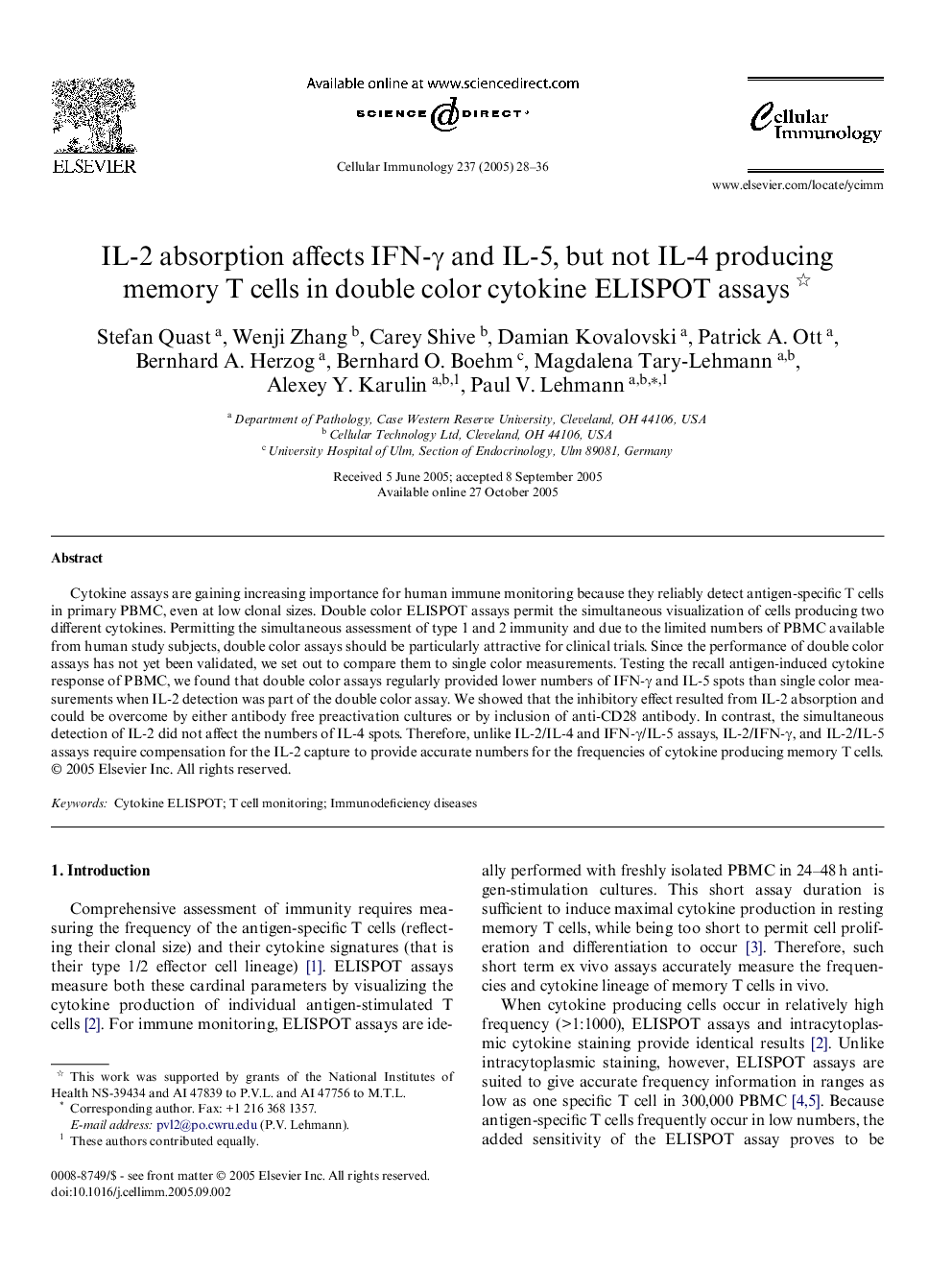| Article ID | Journal | Published Year | Pages | File Type |
|---|---|---|---|---|
| 10927124 | Cellular Immunology | 2005 | 9 Pages |
Abstract
Cytokine assays are gaining increasing importance for human immune monitoring because they reliably detect antigen-specific T cells in primary PBMC, even at low clonal sizes. Double color ELISPOT assays permit the simultaneous visualization of cells producing two different cytokines. Permitting the simultaneous assessment of type 1 and 2 immunity and due to the limited numbers of PBMC available from human study subjects, double color assays should be particularly attractive for clinical trials. Since the performance of double color assays has not yet been validated, we set out to compare them to single color measurements. Testing the recall antigen-induced cytokine response of PBMC, we found that double color assays regularly provided lower numbers of IFN-γ and IL-5 spots than single color measurements when IL-2 detection was part of the double color assay. We showed that the inhibitory effect resulted from IL-2 absorption and could be overcome by either antibody free preactivation cultures or by inclusion of anti-CD28 antibody. In contrast, the simultaneous detection of IL-2 did not affect the numbers of IL-4 spots. Therefore, unlike IL-2/IL-4 and IFN-γ/IL-5 assays, IL-2/IFN-γ, and IL-2/IL-5 assays require compensation for the IL-2 capture to provide accurate numbers for the frequencies of cytokine producing memory T cells.
Keywords
Related Topics
Life Sciences
Biochemistry, Genetics and Molecular Biology
Cell Biology
Authors
Stefan Quast, Wenji Zhang, Carey Shive, Damian Kovalovski, Patrick A. Ott, Bernhard A. Herzog, Bernhard O. Boehm, Magdalena Tary-Lehmann, Alexey Y. Karulin, Paul V. Lehmann,
